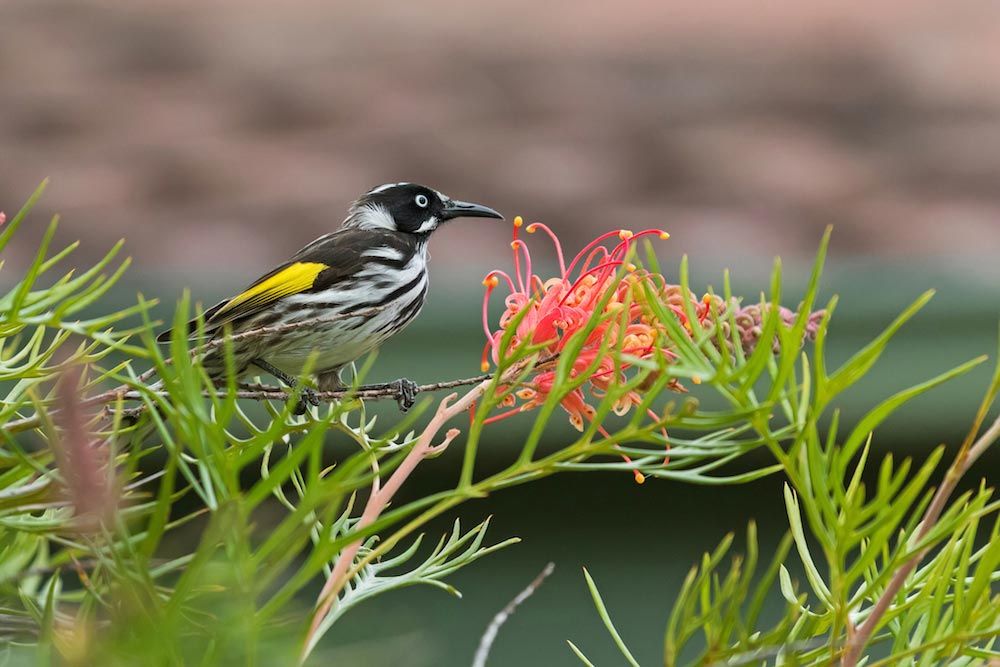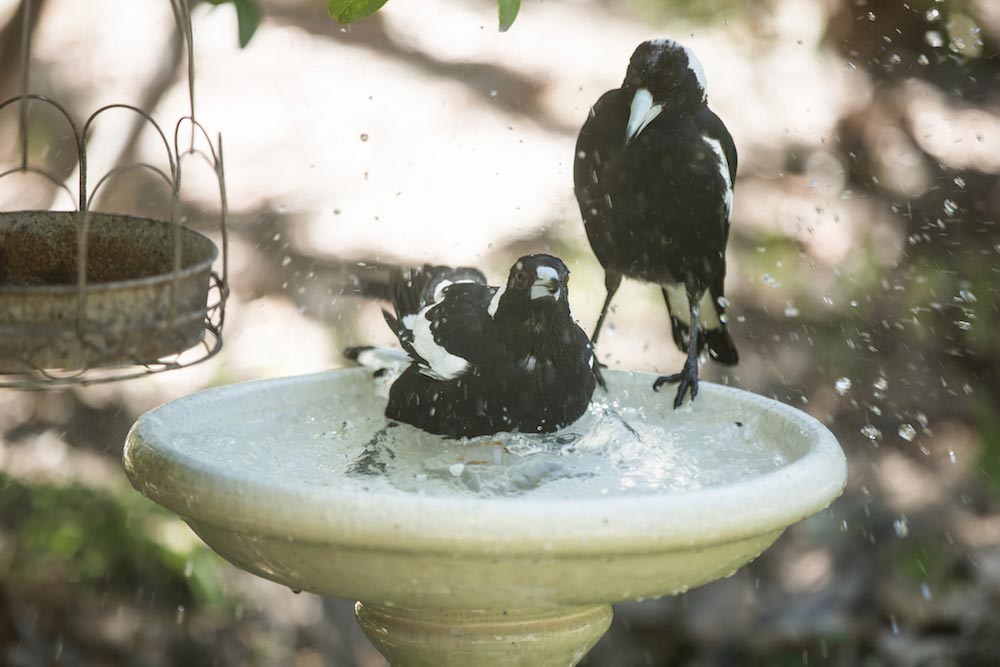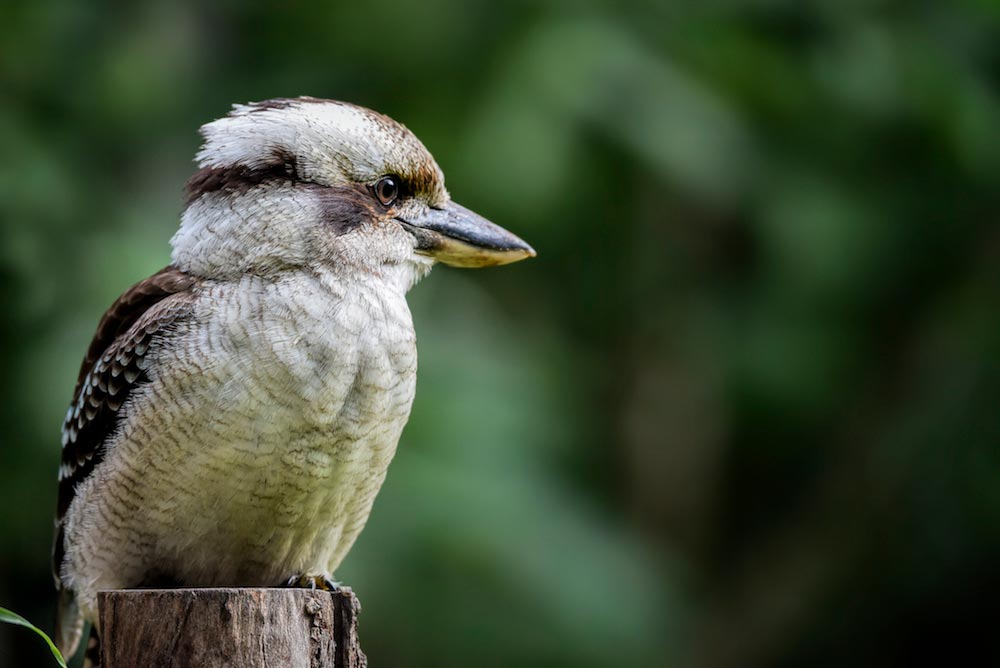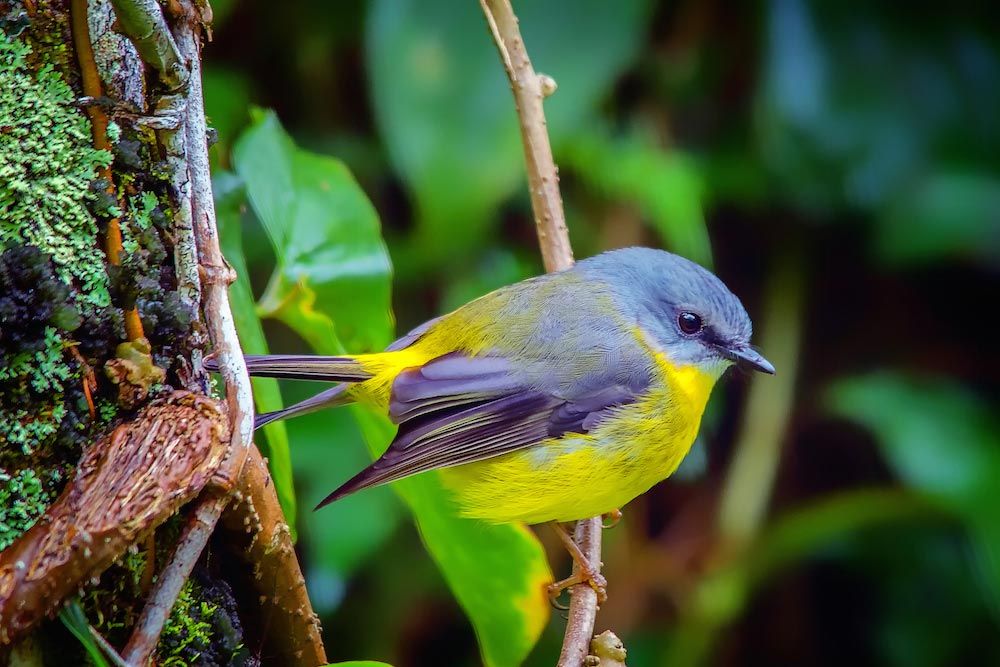
One of the wonderful things about living in Australia is our vast and amazing population of native birds, and it's not too difficult to experience them close up with a little bit of effort. In the following we describe 4 easy things you can do to attract native birds to your patio or deck.

1. Plant Flowering Natives
The most effective way to attract native birds to your patio or deck is to provide them with the food they would naturally eat. Most smaller birds eat nectar, insects, spiders and seeds, with the larger birds also partaking of small rodents, reptiles, frogs, nestlings and eggs. Clearly, providing the former is easier than the latter, and in many cases, it is these smaller birds that we want to attract, rather than the more common Magpies and Currawongs. Do some research into the kinds of birds that are native to your region and the food they like to eat, and start learning about the kinds of plants that will draw them onto your patio or deck.
In the photo opposite, a New Holland Honeyeater (which ranges along the east coast from Brisbane downwards) is eating the nectar from a Grevillea, a beautiful flowering native that can attract a variety of birds.
But don’t feel limited by a lack of garden space as there are a number of flowering natives that grow well in pots, although consulting with your local nursery first is a good idea. Grevilleas in particular really don’t like wet feet, so use a quality native potting mix and a pot with good drainage.
Flowering natives are not only good for their nectar, but also for attracting insects and native bees, which in turn will attract other kinds of birds, such as Wagtails and Fairy Wrens. And don’t rule out planting some native grasses in pots, which are great for attracting seed-eaters, such as Finches, Galahs, Cockatiels and Corellas.

2. Provide A Water Source
Adding a bird bath or water feature to your patio or deck is a great way to draw birds of all kinds. You could even think about creating a water garden to serve this purpose, using oxygenating plants to keep the water fresh and clean. Always use a shallow dish, so smaller birds don’t drown, and make sure you change the water every day to prevent the spread of disease.
Once installed, you’ll probably find your bird bath or water feature is one of the most entertaining spots on your patio or deck, as the sheer joy of birds bathing is something to behold. You’ll also be ensuring the health of your local birds during hot weather, as thirst is a major killer of native wildlife, particularly in drought-prone areas.

3. Don't Feed The Birds!
Contrary to popular belief, feeding native wildlife of any kind is not helping, but rather hindering, their health and well-being. While it might seem cute to have Rainbow Lorikeets or Magpies eating out of your hands, it’s counter-productive, as the birds are perfectly capable of finding food for themselves (unless it’s a period of prolonged drought). Feeding them not only risks the birds becoming dependent on you but can harm their health, particularly if they’re being fed food stuffs they’d not naturally eat.
Larger birds, like Magpies, Kookaburras, Currawongs, are particularly inclined to becoming dependent on humans and not only is this not good for them, but their presence tends to scare away the smaller birds. Tempting as it is to befriend these beautiful birds, think about their visits as a treat, rather than something you want to encourage on a daily basis.

4. Keep Predators Away
If you have a cat, you’ll probably want to reconsider attracting birds to your garden, unless it’s contained in your house or a cat run. This is because cats are one of the biggest threats to native birdlife in this country, alongside foxes, loss of habitation, climate change and invasive plant species.
Small birds, like the Eastern Yellow Robin in the photo, tend to forage in the undergrowth for insects and spiders, making them easy prey for both domestic and feral cats. In fact, it is estimated that cats take around 212 different species of birds every year, which is a devastating figure. And it’s clear from this that a love of cats and birds really doesn’t mix, unless it’s carefully and conscientiously managed.
Fundamentally, the key to attracting birdlife to your patio or deck is to do your research; find out what birds are most prolific in your area and what plants and insects they like to eat, and go from there. Before long you’ll be entertained by the antics of a variety of birds throughout the day and you’ll wonder how you ever lived without them.
If you’ve enjoyed this blog article and would like to find others similar to it, you can do so by clicking on the link below.






